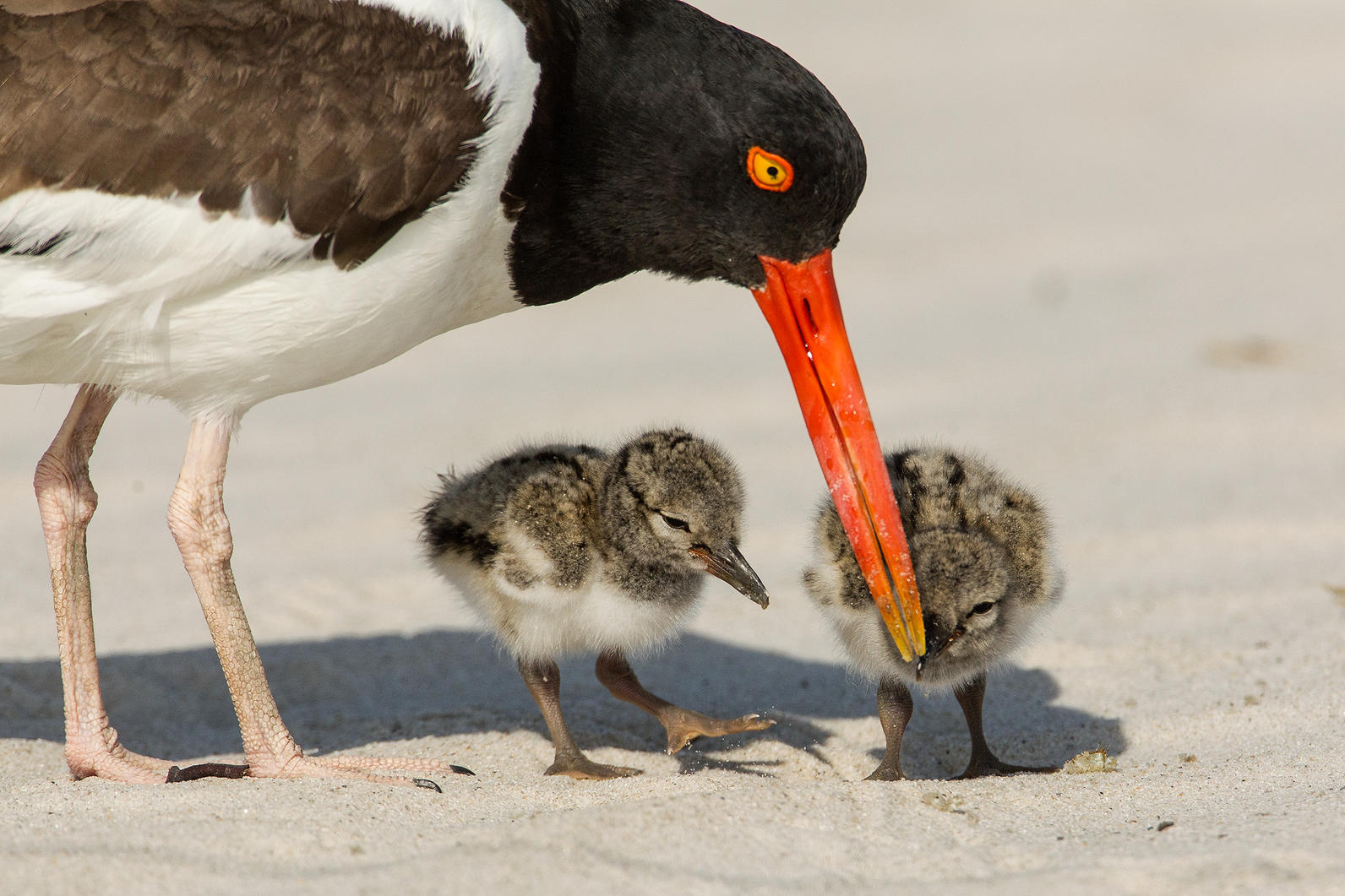Morning light glitters on the water. The beach is heating up fast. Carl Cole squints at joggers and sunbathers. When he spots a motorboat at the far end, his jaw tightens. Four boaters and an off-leash dog are heading straight for the nest of an American Oystercatcher.
Oystercatchers aren't producing as many chicks in the Carolinas as they do elsewhere. In this estuary, they nest just once or twice each year. If people or dogs scare the adults off this nest, their eggs will likely fry in the sun. Grabbing his hat, Carl begins trotting up the beach as fast as he can.
Shorebird Stewards
Carl, a retired IT manager, is an Audubon Shorebird Steward at Lighthouse Inlet, on the Northeast end of Folly Beach. At high tide here, there’s just a thin strip of beach between wild water and wild land. Behind the beach are dunes, then many acres of salt marsh and pluff mud pocked with tidal pools.
The fascinating overlap of habitats, plus a view of the Morris Island Lighthouse, make this a tremendously popular spot. But the narrow high-tide beach puts visitors on a collision course with birds that nest in the dunes and on the wrack.
These birds include American Oystercatchers, whose Atlantic populations are now increasing slightly after a century of significant decline. They also include Willets and Wilson's Plovers, which continue to decline.
All three species face typical threats for coastal birds, including overfishing, habitat loss, and human disturbance. Due to these and other challenges, global shorebird and seabird populations have dropped 70 percent in the last few decades.
Saving a Nest
To help arrest these declines, Audubon South Carolina recruits volunteers for Folly Beach and for Dewees, Kiawah, Seabrook, Hunting, and Harbor Islands. Carl Cole is a particularly faithful volunteer.
Rushing along the beach that day, Carl could see the boaters approaching the oystercatcher nest. Their black spaniel raced forward, nose down. Gauging the distance, Carl realized — there’s no way I’ll get there before they do.
Then, something remarkable happened. Approaching Carl was a young man he’d met an hour before, who'd asked many questions about threats to the birds. “Look!” the fellow said, pointing down the beach. “I told ‘em about you. They’re heading back to the boat to leash that dog.”
Sure enough, that’s exactly what happened. And once the nest was saved, the boaters asked Cole to tell them all about the birds.
The Razor's Edge
Each year, the South Carolina Department of Natural Resources (DNR) does its best to protect typical nesting spots at Lighthouse Inlet. They run strings between signs to keep people off the dunes — and off the nests, which are virtually invisible.
But people duck under the strings. And in spring and fall, they disturb exhausted birds that rest here during their marathon migrations. Migratory shorebirds struggle with so many stresses worldwide that just a few flights to avoid humans and dogs can threaten a bird’s survival.
Keith McCullough, who coordinates natural history interpretation here for Charleston Parks, says he sees birds disturbed all too often. Beachgoers, will send a child or dog dashing through a big group of birds just to snap a picture of them wheeling in the air. Similar photos often appear in the local press.
“There’s really no thought,” McCullough adds ruefully, “about the razor’s edge these birds sit on between life and death.”
Positive Response
Which is exactly why South Carolina's beaches need Shorebird Stewards. On Sundays through the summer, Carl Cole sits at the entrance to this beach with a sign that says, “Ask Me About the Birds.” His approach is always gentle. When someone strays into a prime nesting area, he might say, “Hey, can I tell you about the birds?”
And people respond well. They come back when the tide is lower, so they can walk farther from the dunes and not disturb birds. Or they move themselves and their dogs to an entirely different part of Folly Beach.
From the nest Carl saved that day, two chicks hatched and made it at least to near-adult size (that's the last time they were spotted). His reward for a job well done included scores of positive conversations, as well as an intimate look at birds whose presence on the South Carolina coast may not last forever.
“I got so tickled,” he remembers, “watching this oystercatcher chick imitating his parents, chasing off Laughing Gulls way bigger than him. I could practically hear him saying, ‘Hey ma, look at me!’”
Bigger Changes
Felicia Sanders, a DNR wildlife biologist, enjoys this same intimate view of coastal birds all the time. She and her colleagues record the declines and upticks in South Carolina's seabird and shorebird numbers. So she’s acutely aware of the need to build public will to strengthen laws and policies to stabilize their fragile populations.
“Shorebird Stewards do critical outreach to change the perspective of the general public," Sanders says. "And only with strong public support can we make even bigger changes happen for our state's coastal birds.”
To become a Shorebird Steward, contact Nolan Schillerstrom at nschillerstrom@audubon.org.








